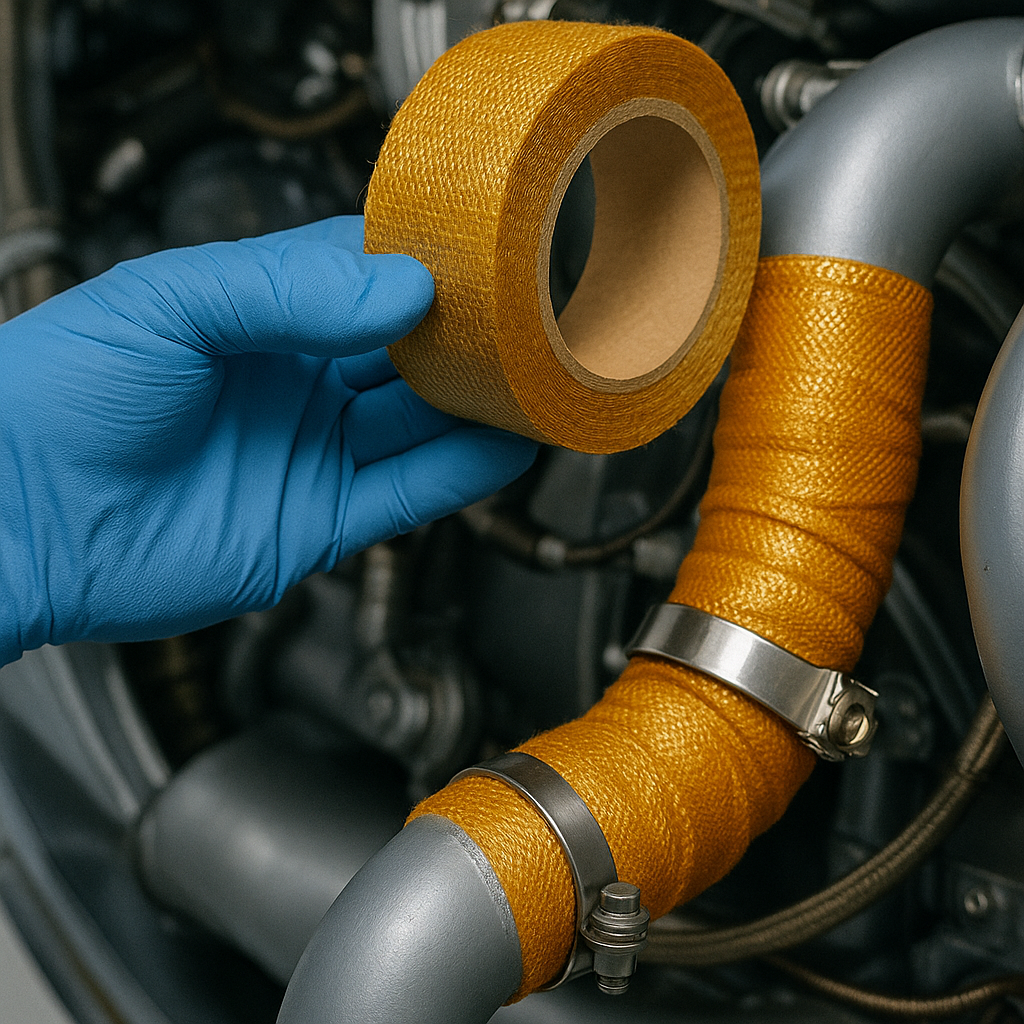Why High-Temp Insulating Tapes Are Critical in Aerospace Applications

Aerospace environments are among the most unforgiving—on Earth or in orbit. Components must endure violent temperature swings, constant vibration, pressure changes, and electromagnetic interference, all while maintaining faultless reliability. In these extreme conditions, conventional materials degrade quickly. That’s where high-temperature insulating tapes prove their worth.
More than just accessories, these tapes are essential components in modern aircraft, satellites, and spacecraft. They handle heat shielding, prevent electrical failures, and reinforce structural integrity in systems where there is zero room for error.
What Are High-Temp Insulating Tapes?
High-temperature insulating tapes are specialized materials designed to function in sustained heat environments ranging from 250°C up to—and sometimes exceeding—350°C. These aren't general-purpose tapes; they're engineered for aerospace-grade performance using advanced materials such as:
-
PTFE (Polytetrafluoroethylene): Known for chemical resistance and thermal durability.
-
Kapton® (Polyimide): A NASA-trusted material for stability across extreme temperatures.
-
Glass Cloth: Flame-retardant and strong, ideal near high-stress mechanical zones.
-
Silicone Adhesives: Offer flexibility and thermal consistency under prolonged stress.
Each formulation is chosen for its ability to meet strict aerospace demands, including heat exposure, chemical resistance, and mechanical stress.
Key Roles in Aerospace Systems
🔥 1. Thermal Protection
Tapes are used to shield wiring harnesses, ducts, and sensitive components from engine heat and environmental exposure. Often integrated into the aircraft’s thermal management system, they act as heat-reflective or dissipative barriers.
⚡ 2. Electrical Insulation
In avionics and high-voltage areas, electrical failures are not an option. These tapes provide insulation that maintains electrical separation—even under vibration, pressure, or altitude-related stress.
🛠️ 3. Structural Sealing & Durability
Beyond thermal and electrical functions, high-temp tapes dampen vibration and seal mechanical joints. Glass cloth tapes, for example, are routinely applied near rivet lines or fasteners to prevent fatigue and absorb mechanical stress.
Advanced Materials & Technologies
Aerospace engineering demands more than heat resistance. High-temp tapes are now tailored for:
-
Low outgassing (per NASA ASTM E595)
-
Flame retardance (compliant with FAR 25.853)
-
Military-grade durability (qualified under MIL-I-24391C and related MIL-SPECs)
Innovations include:
-
Nano-ceramic laminates
-
Space-rated adhesives
-
Self-healing coatings for extended tape longevity
Where Are They Used in Aircraft and Spacecraft?
You’ll find high-temp tapes throughout aerospace systems, including:
-
Engines & Turbines: For thermal shielding and chemical resistance
-
Electrical Systems & Avionics: For insulation, EMI protection, and wire harness security
-
Fuselage & Structural Components: To absorb stress along seams and maintain seal integrity
-
Spacecraft & Satellites: In vacuums, extreme cold, and radiation, these tapes must meet NASA outgassing standards
The Aerospace Advantage
High-temperature insulating tapes are unsung heroes in the aerospace industry. They protect vital systems, maintain structural integrity, and provide thermal and electrical insulation where failure isn’t an option.
With rising demands in both manned and unmanned systems, these tapes are evolving quickly. By choosing certified products and reputable suppliers, engineers can ensure compliance with stringent safety and performance standards—while enabling next-gen aerospace innovation.
Sourcing Aerospace-Grade High-Temp Tapes
When specifying tape for mission-critical environments, you must choose materials that meet FAA and NASA standards, as well as MIL-SPEC performance criteria. That’s why sourcing from certified suppliers is essential.
For a vetted selection of Kapton®, PTFE, and glass cloth high-temp tapes, including space-rated and flame-retardant options, visit ATS24.com — a trusted source for aerospace-approved materials and technical components.
